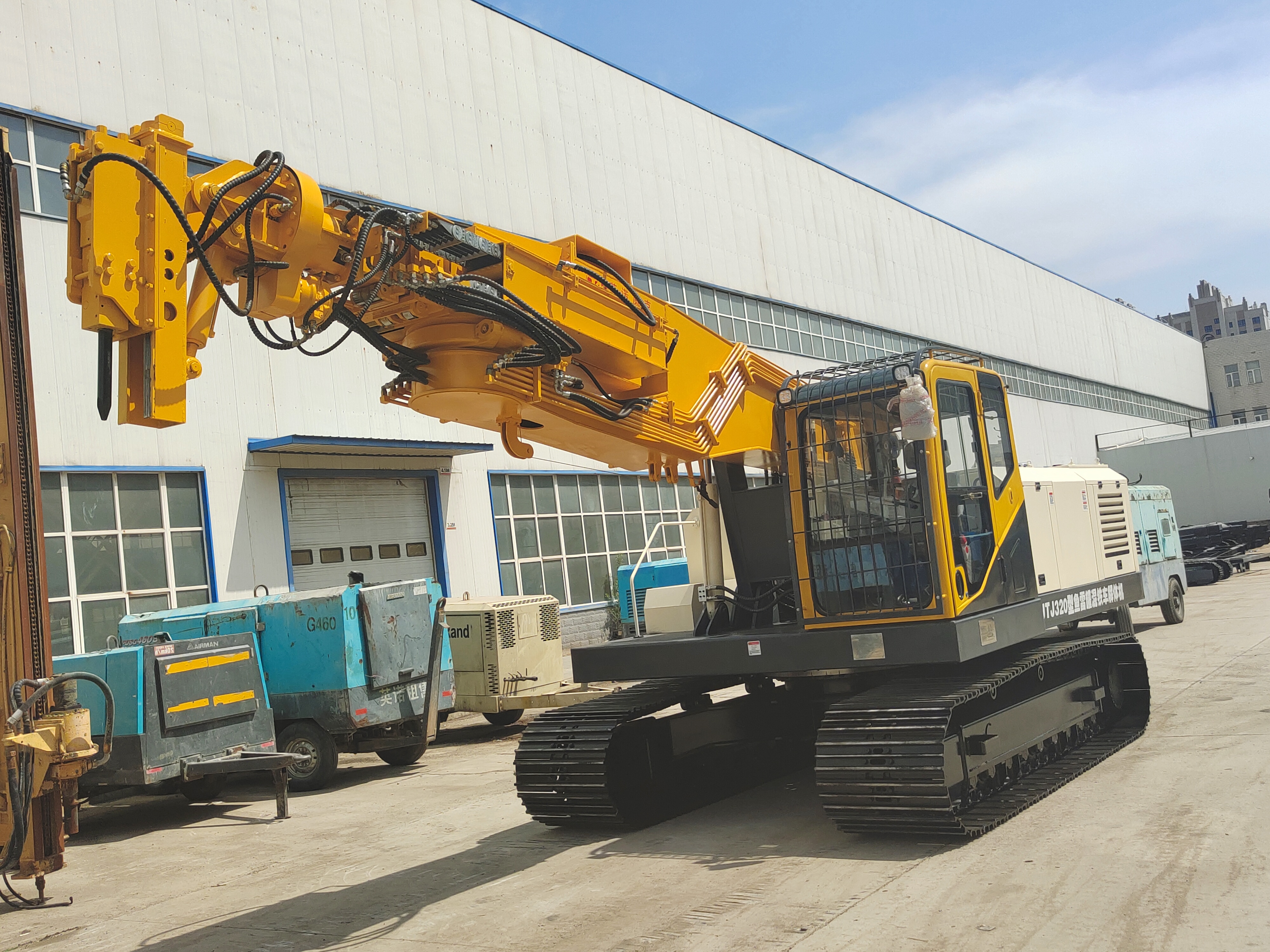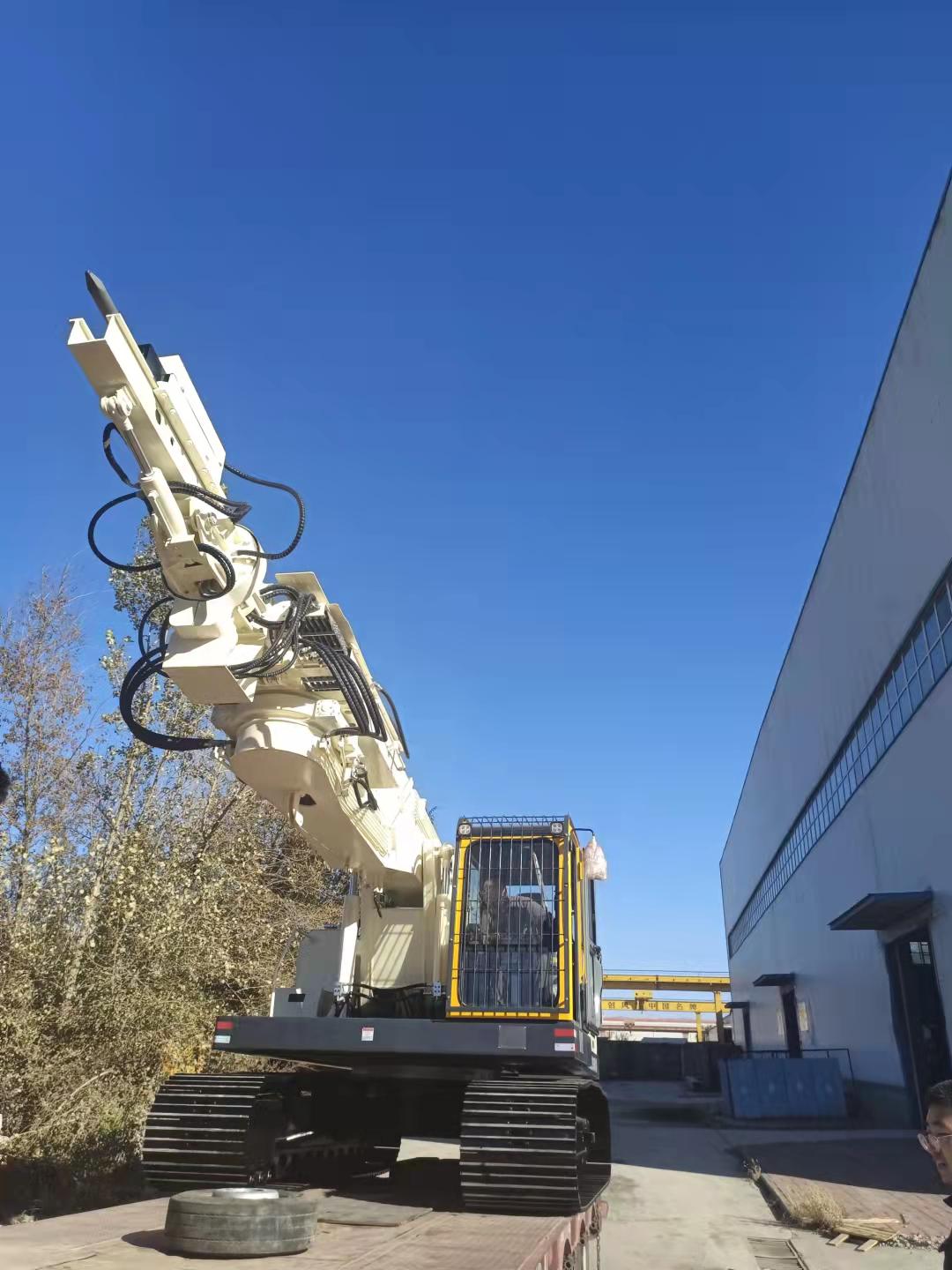Views: 0 Author: Site Editor Publish Time: 2025-10-25 Origin: Site

Equipment Weight: The total weight of the machine reaches 25,000 Kg, equivalent to a stable machine body of approximately 25 tons. This weight design is not redundant; instead, it is intended to balance the reaction force generated by the high-speed impact of the hydraulic hammer, preventing the equipment from shifting or shaking during operation, ensuring the accuracy of the demolition process. At the same time, it provides structural support for long-term high-intensity operations and reduces wear on the machine body.
Hydraulic Hammer Rotation Performance: Equipped with a 360° continuous rotation hydraulic hammer, it breaks the limitation of "fixed-angle operation" of traditional demolition equipment. In the circular cavity structure of the torpedo ladle, the 360° dead-angle-free rotation capability allows the hydraulic hammer to easily cover any nodulation position inside the ladle. There is no need to frequently adjust the overall position of the equipment, which greatly reduces auxiliary operation time and improves cleaning efficiency.
Working Range of Telescopic Arm: The maximum working radius of the telescopic arm is 6 meters, and when combined with a telescopic stroke of 2.2 meters, it forms a flexible and wide operation coverage area. For torpedo ladles of different specifications (usually 3-5 meters in diameter and 10-15 meters in length), this parameter ensures that the hydraulic hammer can reach the deep inside of the ladle to clean nodulation at distant positions. Meanwhile, the 2.2-meter stroke adjustment capability can adapt to changes in the size of nodulation, avoiding problems such as "excessive impact" or "incomplete cleaning".

Stable Machine Base: The 25-ton weight is mainly concentrated on the machine base and the counterweight module. The base is made of high-strength manganese steel through welding, and the bottom is equipped with adjustable support feet, which can adapt to the uneven ground environment in iron and steel plants and further enhance the stability of the equipment during operation. At the same time, the connection between the base and the traveling mechanism (some models can be optionally equipped with crawler-type traveling) uses wear-resistant bearings to reduce wear caused by long-term movement.
360° Rotation Hydraulic System: The rotation function of the hydraulic hammer is driven by an independent hydraulic motor, and combined with a high-precision gear transmission mechanism, it achieves "no jamming and continuous rotation". The hydraulic system adopts a dual-pump oil supply design, and the rotation action and the impact action of the hydraulic hammer can be controlled independently without mutual interference. For example, when adjusting the angle of the hydraulic hammer, there is no need to pause the impact operation, which greatly improves the operational continuity.
Multi-Section Telescopic Arm: The telescopic arm adopts a multi-section structure of "main arm + auxiliary arm", made of high-strength alloy steel, which has both rigidity and lightweight advantages. The 2.2-meter telescopic stroke is driven by a hydraulic cylinder, and the cylinder is equipped with a displacement sensor that can feedback the extended length of the telescopic arm in real time, facilitating the operator to accurately control the operation position. In addition, the connection between the telescopic arm and the hydraulic hammer is equipped with a buffer device, which can absorb the vibration generated by the impact of the hydraulic hammer, reduce damage to the arm body, and extend the service life.
Efficient Cleaning, Shortening Downtime: Most traditional demolition equipment uses fixed-angle impact. Cleaning a torpedo ladle requires frequent adjustment of the equipment position, taking about 4-6 hours. However, the 360° rotation and 6-meter working radius of the ILB320 can cover more than 95% of the interior area of the torpedo ladle. Combined with the high-frequency impact of the hydraulic hammer (impact frequency up to 30-50 times per minute), the cleaning time for a single torpedo ladle can be shortened to 2-3 hours. This greatly reduces the downtime and idleness of the torpedo ladle and improves the continuity of iron and steel production.
Precise Operation, Protecting the Torpedo Ladle Body: The inner wall of the torpedo ladle is made of high-temperature-resistant refractory materials. Due to insufficient operation accuracy, traditional equipment is prone to impact the ladle wall when cleaning nodulation, causing the refractory materials to fall off and increasing maintenance costs. The displacement sensor and buffer device of the ILB320's telescopic arm allow the operator to accurately control the distance between the hydraulic hammer and the ladle wall (the minimum distance can be controlled within 50mm), avoiding accidental impact on the ladle wall. At the same time, the impact energy of the hydraulic hammer can be adjusted through the control system (impact energy range: 50-150kJ), and the appropriate energy level can be selected according to the hardness of different nodulation, ensuring that the nodulation is completely broken while protecting the safety of the ladle wall.
Stability and Reliability, Adapting to Harsh Working Conditions: There are harsh working conditions such as high temperature, dust, and vibration in iron and steel plants. The hydraulic system of the ILB320 adopts a closed design, equipped with an efficient cooler and filter element, which can prevent dust from entering the interior of the system and adapt to high-temperature environments of 30-60℃. The surface of the machine body is coated with a high-temperature-resistant anti-corrosion coating, which can resist high-temperature baking and dust corrosion caused by molten iron splashing, reducing the operation and maintenance costs of enterprises.